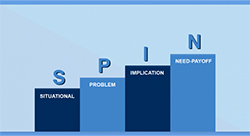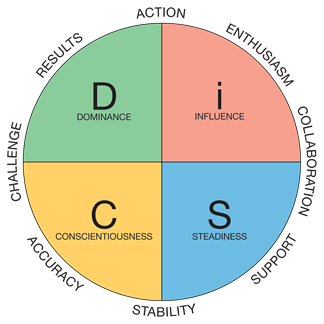 What is the Internet of things, anyway? We’re glad you asked. It’s something you probably take for granted and don’t even realize it. When you get a text that notifies you of a package delivery on your i-Phone, listen with wireless earbuds to Pandora, ask Alexa a question, or check your Fitbit, you’ve dabbled in the Internet of Things, or IoT for short. Any device that has a sensor or a connection to the internet is part of the IoT. Virtually everything has some kind of internet connection these days, and that means businesses should keep up to date on changes in society that IoT creates. To ignore these trends would outdate your business, and that translates to decreased profitability.
What is the Internet of things, anyway? We’re glad you asked. It’s something you probably take for granted and don’t even realize it. When you get a text that notifies you of a package delivery on your i-Phone, listen with wireless earbuds to Pandora, ask Alexa a question, or check your Fitbit, you’ve dabbled in the Internet of Things, or IoT for short. Any device that has a sensor or a connection to the internet is part of the IoT. Virtually everything has some kind of internet connection these days, and that means businesses should keep up to date on changes in society that IoT creates. To ignore these trends would outdate your business, and that translates to decreased profitability.
How does IoT affect our behavior? Technology has made life easier and the digital age is here to stay. For example, instead of reaching for a dictionary, we ask Siri for a definition or pronunciation. As a business owner, seeing how these changes in technology have affected society (and how money is spent) is the first step. The second one is understanding how to create a digital marketing strategy that will grab consumers’ attention. Because potential clients have so many resources at their fingertips now, being able to find new ways to communicate with them and answering questions they may have, creates a connection with them. This connection is part of branding your business.
IoT itself is changing how client input is processed by those very devices. For example, a Google search a decade ago would’ve included basic key words only. Today, we ask whole questions to Siri. It’s more humanized. Searches now run not just on key words, but take into account our natural language patterns. Most everyone has noticed how they can be speaking of something casually, and suddenly advertisements for that very thing pop up on their social threads. There’s a fine line between gathering information for business analysis, and perceived invasion of privacy.
Taking IoT into account with web design (or upgrade) is key, because conveying a sense of trust between your company and clients is essential, even as business activities interact more directly with internet-connected devices. A secure website that looks good and loads quickly on laptops as well as smart devices is the standard. Adding a protocol to your business that, where applicable, includes geofencing/geomapping as well as external factors such as weather or traffic information could give you a serious edge in sales. For example, imagine a company that sells rain jackets and umbrellas being able to advertise those things on smart phones when rain is forecasted, and apply the concept to your company.
Most everyone has a smart phone. Tweaking your company’s website to embrace mobile IoT technology is essential. We can help with that. Click here for more information.

 Finding that sweet spot in sales where you really communicate with your customers, and thereby increase sales, can be tricky because everyone seems to be pressed for time. Face it, even you may feel overwhelmed. One method for streamlining your sales approach is the SNAP method, which is a handy acronym to help you be more effective. The SNAP Technique basically brings the salesman to the prospect’s level.
Finding that sweet spot in sales where you really communicate with your customers, and thereby increase sales, can be tricky because everyone seems to be pressed for time. Face it, even you may feel overwhelmed. One method for streamlining your sales approach is the SNAP method, which is a handy acronym to help you be more effective. The SNAP Technique basically brings the salesman to the prospect’s level. The SPIN sales technique is a system of asking certain categories of questions to improve your sales funnel results. As with any conversation, the quality of the question is the key to success. Wrong questions turn off clients and lose sales. In the SPIN technique, it’s the buyers who do most of the talking. Your job is to build rapport and take notes, so you’ll understand what they really need.
The SPIN sales technique is a system of asking certain categories of questions to improve your sales funnel results. As with any conversation, the quality of the question is the key to success. Wrong questions turn off clients and lose sales. In the SPIN technique, it’s the buyers who do most of the talking. Your job is to build rapport and take notes, so you’ll understand what they really need. The DISC model is a way to analyze four basic personalities, which can help increase your sales records. After all, if you are selling something, it always helps to understand why people act the way they do. DISC is a way to categorize people very quickly into different personalities. Once you know which kind of person you’re dealing with, you can modify how you approach them to ways in which they will respond. In short, you can speak their language. The four DISC categories are below. As you study them, think of yourself. What kind of DISC personality are you? Then think of the customer you need to contact and which DISC category s/he is most likely in, based on what you already know.
The DISC model is a way to analyze four basic personalities, which can help increase your sales records. After all, if you are selling something, it always helps to understand why people act the way they do. DISC is a way to categorize people very quickly into different personalities. Once you know which kind of person you’re dealing with, you can modify how you approach them to ways in which they will respond. In short, you can speak their language. The four DISC categories are below. As you study them, think of yourself. What kind of DISC personality are you? Then think of the customer you need to contact and which DISC category s/he is most likely in, based on what you already know. 
